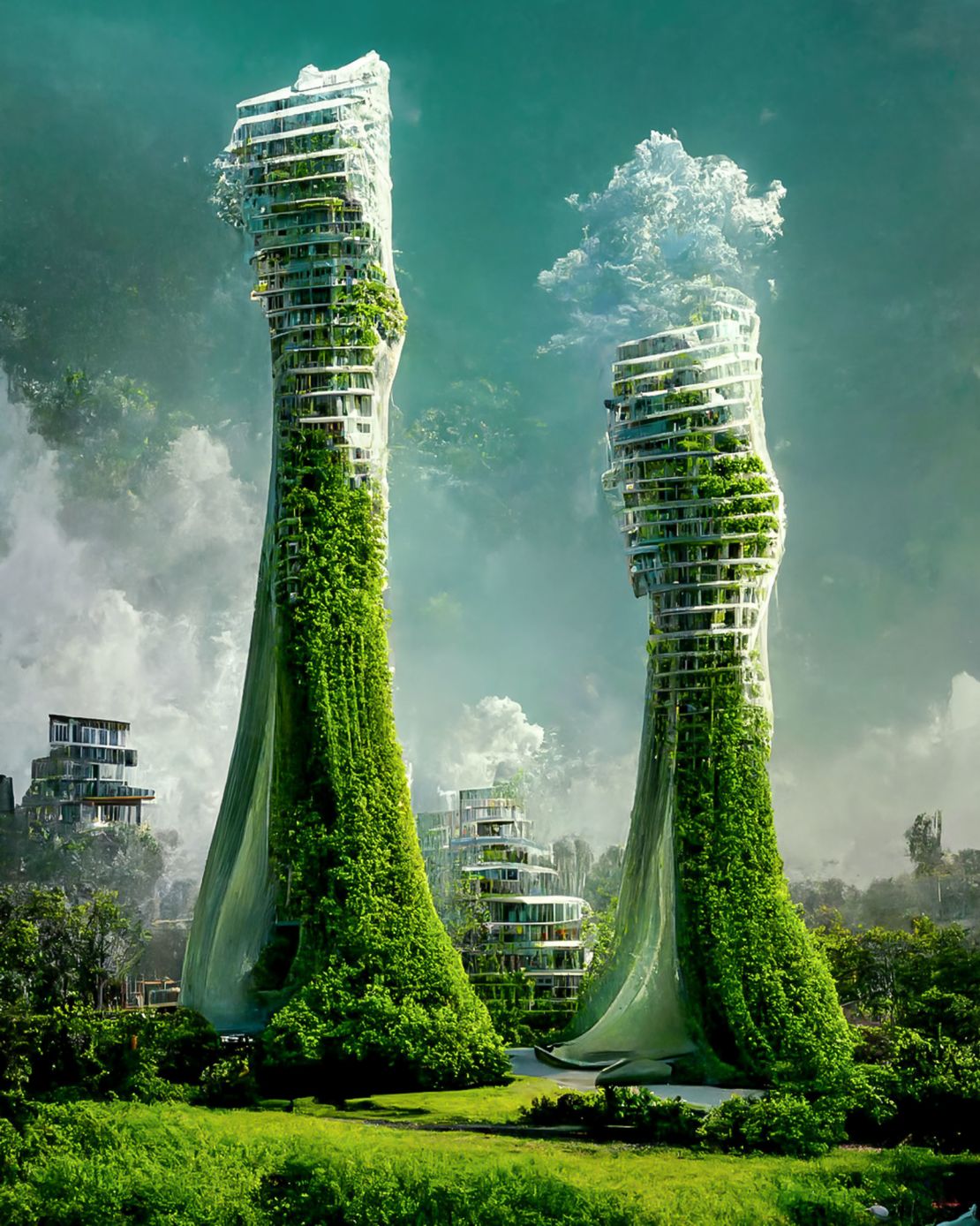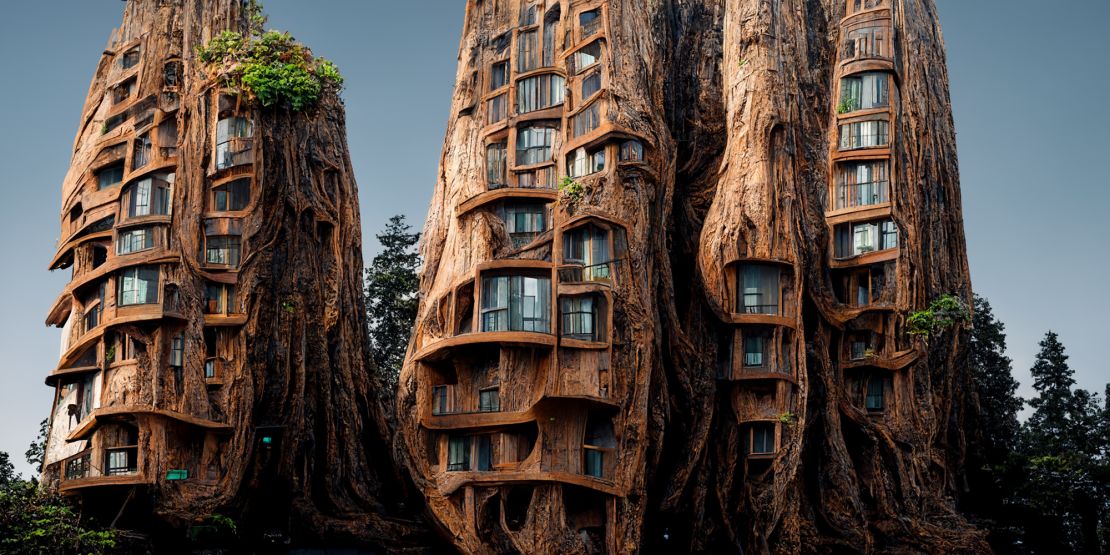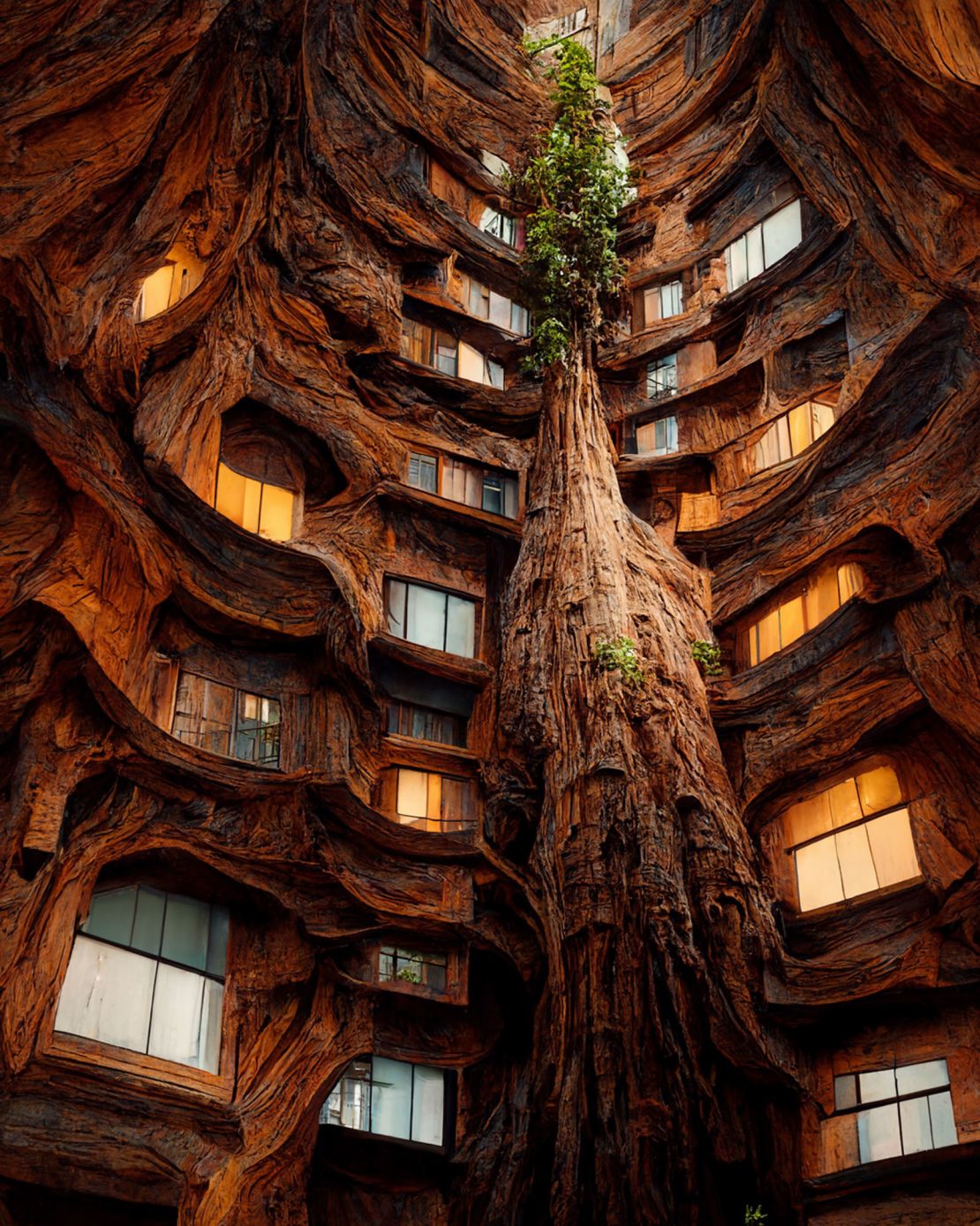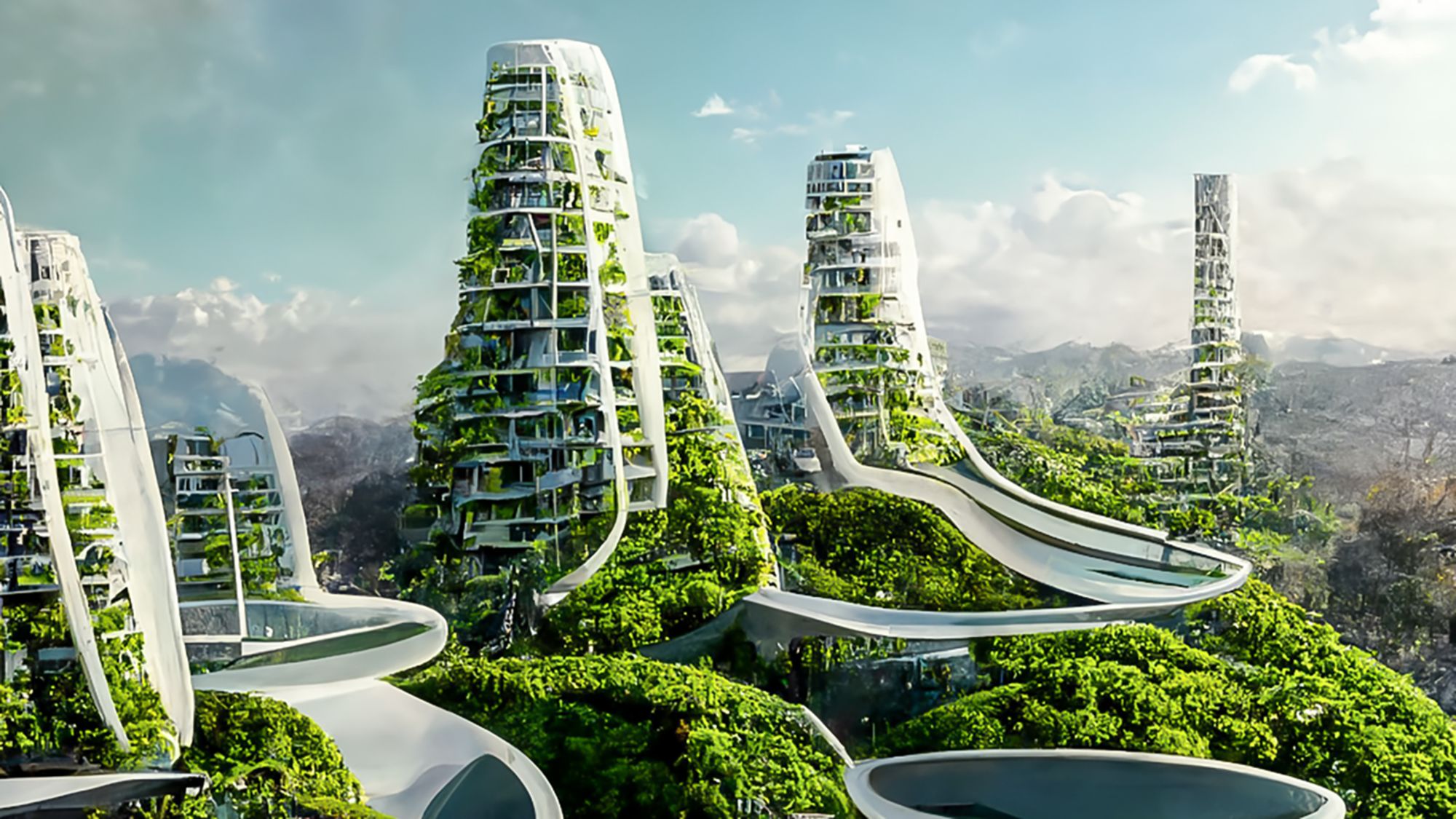Manas Bhatia has a bold vision of the future – one where residential skyscrapers covered in trees, plants and algae act as “air purification towers.”
In a series of detailed images, the New Delhi-based architect and computational designer has brought the idea to life. His imagined buildings are depicted rising high above a futuristic metropolis, their curved forms inspired by shapes found in nature.
But the pictures were not entirely of his own imagination.

For his conceptual project, “AI x Future Cities,” Bhatia turned to an artificial intelligence imaging tool, Midjourney, that generates elaborate pictures based on written prompts. Using a series of text descriptions – featuring phrases like “futuristic towers,” “utopian technology,” “symbiotic,” and “bioluminescent material” – Midjourney yielded a series of digital images that Bhatia further tweaked by honing the prompts.
Bhatia said it can take up to 20 minutes to make each of the surreal artworks. He refined his descriptions almost 100 times per project, editing and adding to the text until he achieved the desired results before cleaning up the images using Photoshop.
“The trial-and-error part is the most fun,” the architect said over the phone. “We use AI to create images and, in the process, the AI trains itself and improves over time.”

In another project, titled “Symbiotic Architecture,” Bhatia imagined a future in which buildings are made from living materials. Using prompts like “giant” and “hollowed,” he produced images of what he called a “utopian future” in which apartments are formed inside redwood-sized trees.
He says it was inspired by Hyperion, a 380-foot-tall redwood in California thought to be the world’s tallest living tree. But he also drew on his own day-to-day work at Indian architecture firm Ant Studio, whose projects include retrofitting buildings with new facades to encourage natural ventilation and reduce energy consumption.
“The inspiration (was the idea) of a building’s ‘skin’ being organic and inspired by nature, and how evaporative cooling and transpiration takes place so that (towers can) regulate their own temperature throughout the day,” Bhatia said adding: “If we could create building materials to be organic, and to live and grow, the building could ventilate itself through these natural processes.”

The recent popularity of AI imaging tools like OpenAI’s DALL-E 2 and Google Research’s Imagen have raised new questions about creativity and artistic integrity.
Last month, Colorado game designer Jason M. Allen controversially won $300 at an art competition with a futuristic, Renaissance-style image created using Midjourney. While some social media users and artists expressed their disapproval of Allen’s methods, the designer said his submission – which took him over 80 hours to generate – qualified as a work of digital art.
For Bhatia, AI is just another tool. “Art is completely open to interpretation,” he said. “And an artist can use any kind of tool there is to create art. Anyone can use AI, but they won’t be able to achieve as good a result as a creative person.”

By producing something beyond users’ imaginations, it can spark new ideas and enrich the design process, the architect added. He even envisages a future where AI can generate 3D designs and is integrated into the software that architects use to model their creations.
“It has tremendous potential,” he said. “At our studio, we tried using AI to generate mood board images for a client presentation, and that went very well… In the near future, architects and designers combined with AI would be something to hope for.”



